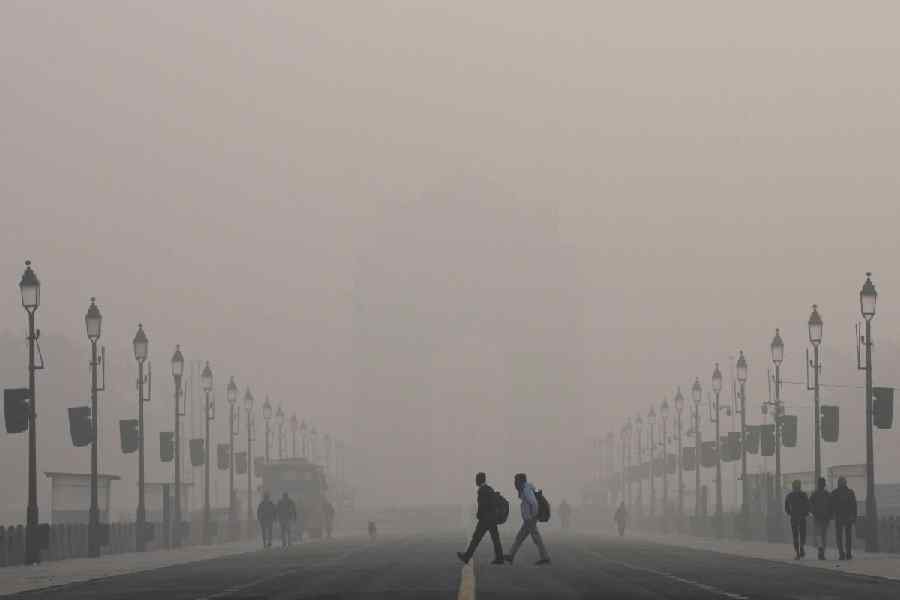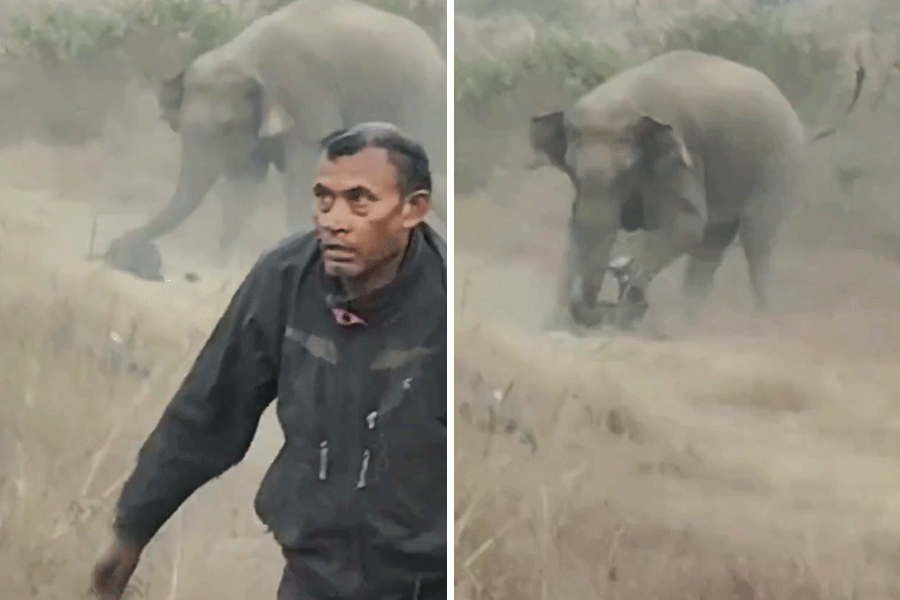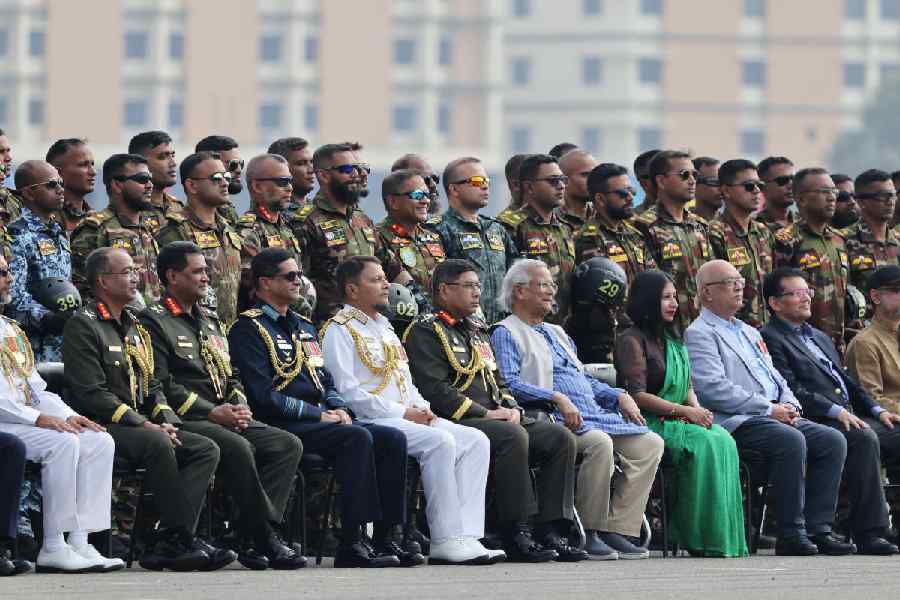 |
A nip here and a tuck there — and our man springs off his hospital bed, his machismo a little bruised, but richer by the promise of a gun. He has been sterilised, and has no great qualms. After all, in return, the government has given him a firearm licence — and that should take care of boosting his manhood.
Madhya Pradesh’s Shivpuri district may have been struck by a brain wave — more and more men are going in for vasectomy in the district to get a gun licence — but the rest of the country is not far behind either. In Maharashtra, the government may not be arming men who willingly accept vasectomy, but the male form of sterilisation is no longer a great taboo.
In the western state’s Bhandara district, Sachin, 39, is giving stock tips to his doctors while being sterilised. Ten minutes later, on his feet, he says he feels a free man.
Vasectomy, or the infamous nasbandi, which many believed was one of the factors that pulled down Indira Gandhi’s government in 1977, is taking off in different parts of the country. The word is no longer associated with coercion — as it was in the mid-Seventies — but is seemingly becoming a bit of a rage these days.
“It’s the beginning of a rising trend,” says former adman Bobby Sista, founder of Population First, a non-governmental organisation (NGO) that works on population and health issues in the country.
When Gandhi’s younger son, Sanjay, started his forced sterilisation campaign, it had few takers. Those days, to woo men, the government gave away a tin of dalda, and later a transistor. And when neither temptation worked, men were dragged to sterilisation camps.
This time, there is no stick to beat them into submission; just a carrot in the form of an increase in incentive, from Rs 175 to Rs 1,100, introduced across India last September.
Doctors say that even in north India — where nasbandi gave birth to wild rumours about how it led to impotency — there is an upward trend in men undergoing vasectomy. In Delhi, the numbers rose from 914 cases in 2004-2005 to 1,849 cases in 2007-2008. In Amritsar, the percentage of men being sterilised rose from 4.78 in 2003-2004 to 22 in 2007-2008.
 |
In the gun-crazy Shivpuri district of Madhya Pradesh, it’s the firearm licence that tempts them. “They get it in three days, after police and other clearances,” says Shivpuri’s district collector Manish Srivastava, who hit upon the scheme last year.
The proposition is tempting, for normally it may take years for someone to procure a firearms licence, which demands that the authorities give you a clean chit before you can arm yourself.
Shivpuri recorded eight vasectomies a year before the scheme was introduced. Last year, after the gun licence scheme came into being, there were 197 vasectomies. In the last five years, the number of such cases in the state has doubled from 14,477 to 30,816. Srivastava says his target for this financial year is 1,000 vasectomies — which, he admits, is “next to impossible.”
The trend, however, is catching on. Dinesh Kaushal, chief medical and health officer, public health department, Shivpuri, points out that 50 of the 197 vasectomies were performed in the last three months.
What’s made it easier is the simplification in time and technique. After a shot of local anesthesia in the scrotal sac, the surgeon makes a tiny puncture in the scrotum. A small section of the vas deferens, the tube that carries sperms, is snipped off and sealed. ‘Bina Cheera, Bina Taaka’ (No cut, no stitch) is the new slogan. This also means a lower risk of infection as compared to the conventional cut and stitch method, says Dr Baljit Kaur, a state trainer in No Scalpel Vasectomy (NSV), which has 20 centres in Punjab.
R. Kapgate, 47, a general physician in Bhandara, says he drove for 65 km immediately after his vasectomy. In Amritsar, Hansraj, 35, says he plans to work the looms the day of his surgery. Doctors, however, advise patients to stay off their feet for two to three days. Cycling and carrying heavy weights are to be put off for a week.
With the well-to-do classes employing other means of contraception, vasectomy is still the preserve of the lower middle class, though, as Kapgate demonstrates, even the upper middle class is not averse to a hassle-free system of contraception. Dr Anil Goyal, a state trainer in NSV for Bhatinda district, says Air Force and Army personnel have also been opting for vasectomy.
In his predominantly rural setup, Dr Kaushal says everyone — from engineers to farmers — opt for a vasectomy. Much of the publicity is by word of mouth. “Nowadays people are not afraid. They come forward to clarify their misconceptions about vasectomy,” he adds.
Candidates are repeatedly told that vasectomy will not make them any less manly or lead to sexual dysfunctions. Of course, in a very small percentage of cases, the severed vas reunites and sperms are freed to carry on with their journey.
Apart from the use of force, a major pitfall of the vasectomy programme of the Seventies lay in its lack of counselling about protected sex for about three months after vasectomy, says Dr Kaur. The World Health Organization and doctors recommend a semen analysis after this three-month period to ensure the absence of sperms. But many men do not turn up for the follow-up, rues Dr Shyama Prasad Bandyopadhyay, associated with the West Bengal government vasectomy programme.
Though vasectomy is far less complicated and expensive than female sterilisation or tubectomy, its numbers are several times lower than the latter. “Tubectomy is still the most widely used form of contraception,” says Sista of Population First.
But there has been a change in recent years. In West Bengal, 1,126 men and 25.3 lakh women were sterilised in 2003-04. Over the last year, the number of men increased to 20,718, and the number of women by a lakh. In Guniyana, a small town in Bhatinda, the number of tubectomies in a government-run primary health centre has halved and vasectomies doubled over the last three years, says Dr Goyal, who heads the centre.
In concrete terms, vasectomy is better paying. The central government pays men undergoing vasectomy, regardless of their socio-economic status. Women, on the other hand, are paid according to which side of the poverty line they fall in: Rs 650 for those below the poverty line and Rs 400 for those above it.
And then, of course, there is the lure of a gun licence. “Guns are like moustaches,” says Srivastava. It is always there, he says, but seldom twirled. And when your moustache and gun are both there, who cares about a snipped tube?











